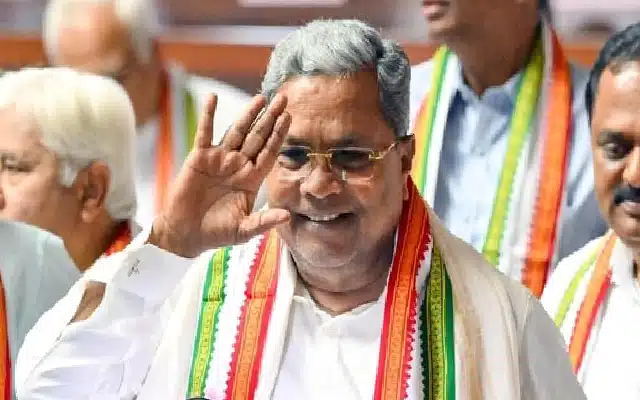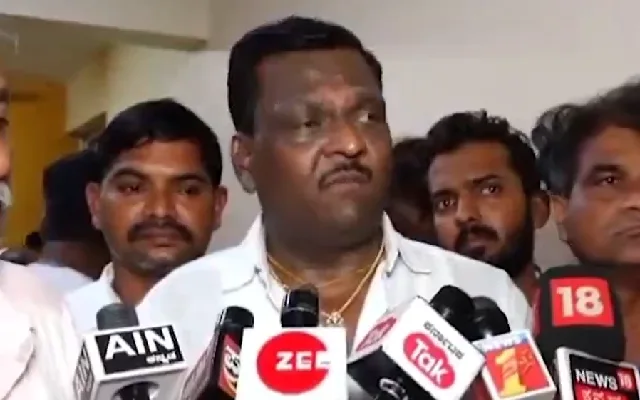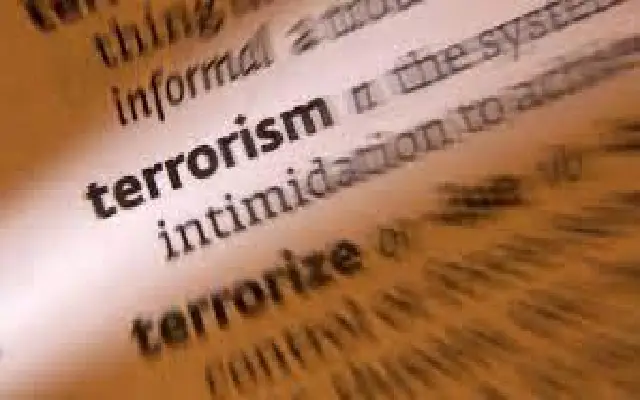Very few places have forests and rivers as beautiful, as bio-diverse and as socially significant as Dakshina Kannada and Uttara Kannada districts of Karnataka. In August 2013, while studying the Gundia Hydroelectric Power Project, I was standing on the banks of a gushing stream somewhere near Kademane Tea Estate. The stream was crystal clear with lush forested banks. There were signs of a recent elephant activity. “This is the site for Yettinahole Diversion Project Weir 1,” said Kishore Kumar Hongadhalla, a repository of local knowledge and wisdom. The scene around me shattered in shards. We had just seen how the proposed Gundia Hydropower Project was set to destroy forests, wildlife corridors and unmatched biodiversity of the region, and here, there was one more project, right next to Gundia HEP components. But I was also skeptical.
 “But where is the water?” I asked Kishore. Even in the veritable downpour, Yettinahole stream looked like any other forest stream, modest and beautiful, but definitely not big enough to quench the thirst of Kolar, Chikkaballapura, Tumakuru, Bengaluru Rural, Bengaluru City, Devanahalli Industrial Estate, Hassan and a growing list of supposed beneficiaries. As I was to realize later, Yettinahole Project is little about water and more about the diversion.
“But where is the water?” I asked Kishore. Even in the veritable downpour, Yettinahole stream looked like any other forest stream, modest and beautiful, but definitely not big enough to quench the thirst of Kolar, Chikkaballapura, Tumakuru, Bengaluru Rural, Bengaluru City, Devanahalli Industrial Estate, Hassan and a growing list of supposed beneficiaries. As I was to realize later, Yettinahole Project is little about water and more about the diversion.
South Asia Network on Dams, Rivers and People (SANDRP) monitors environmental and forest clearance processes of dam projects in the country. The Expert Appraisal Committee (EAC) of the Ministry of Environment and Forests (MoEF) and Climate Change recommends envi-ronment clearance for projects based on the Environmental Impact Assessment (EIA) Notification of 2006. When the EAC’s 63rd meeting considered Yettinahole Diversion Project by Karnataka Neeravari Nigam Limited (KNNL) the project was titled “Clarification on Drinking Water Supply Scheme to Tumakuru, Bengaluru, Kolar and Chikaballapura districts for applicability of EIA Notification, 2006”.
It was impossible to make out that this is a water diversion project, diverting water from the heart of Western Ghats. This was at a time when discussions on Western Ghats were heating up. The EAC on its part took no effort to understand the project, when this was their primary responsibility. The committee concluded that the project does not need environmental clearance as it had no irrigation or hydropower components. This is not true either! The project report included not only irrigation component, hydropower and river rejuvenation too! But when a group of experts including SANDRP pointed this out to the MoEF, the letter was not even responded to.
While the project labelled itself exclusively for Kolar and Chikkaballapura, our analysis revealed that drinking water to be supplied to Kolar and Chikkaballapura will be a bare 2.81 TMC or 11.7 per cent of the 24.01 TMC planned to be diverted. It was misleading not only Dakshina Kannada, but Kolar and Chikkaballpura too.
Blunders in decision making with respect to Yettinahole Diversion Project are not limited to KNNL or the Karnataka Government. Central institutions entrusted with taking informed, transparent and accountable decisions about a sensitive project in Western Ghats, have failed in doing their duty. These include the EAC, the MoEF, National Institute of Hydrology and the Central Water Commission. While MoEF has taken a misinformed decision by allowing the project to escape environmental clearance, CWC and NIH which have been supposedly entrusted with hydrological and viability studies, have not put their studies in open domain for public information or scrutiny, despite the that public’s raising these issues for a long time.
In January 2014, rather than address the issues raised, the then Environment Minister Veerappa Moily announced foundation stone laying for the project. Mr Moily was the Union Environment Minister, belonging to Dakshina Kannada. The project had allegedly escaped environmental clearance by fraud. It had not even secured forest clearance and yet the minister was ready to lay the foundation stone of a scheme.
Meanwhile, the Yettinahole Project report underwent major changes in December 2013. This was also not put in public domain. The language was suave and it took precaution to hide its irrigation component further. It also dropped the reservoir at Devarayanadurga which was to submerge 1,200 hectares including two villages. But now the report proposes two balancing reservoirs at Byragondlu and Thumbaddi in Kortagere Taluk, which will submerge an area of 2,700 hectares and 10 villages.
The project, as per the DPR is divided into Phase I and Phase II and it includes eight weirs in Western Ghats, on streams Yettinahole, Kerihole, Kadumanehole and Hongadahalla, several pump houses, raising mains that run for several kilometers are nearly five kms wide, three delivery chambers (DC) and a gravity canal in the Western Ghats forests. From the weirs, 85 cumecs (Cubic Meters per second) water will be drawn round the clock to be delivered at Haravanahalli. Phase II includes a canal running 274 kilometers, cutting across the ridge line dividing the Cauvery and the Krishna basins and culminating at a balancing reservoir at Byragondlu and Thumbadi.
These reservoirs will submerge 2,700 hectares land and more than 10 villages.
Although pushed for drought-affected region, the project will supply water to T.G. Halli and Hesarghatta reservoirs, which supply water to Bengaluru and Devanahalli industrial area. Water will also be used to fill more than 500 minor irrigation (MI) tanks in many districts and taluks. It is amazing how the project envisages filling MI tanks to 50 per cent capacity. Water will be pumped and released to the highest point and it will cascade (overflow) in the downstream. This is one of the most inefficient and nonmonitorable ways of filling tanks. The same KNNL is working on all-drip irrigation projects. Here it is letting the Western Ghats water to be wasted.
The cost of the project as per DPR stands at nearly Rs 13,000 crores as per 12-13 price line. This exceeds the entire 13-14 years’ budget of the Karnataka Water Resources Department, at Rs 8,007 crores and is nearly five times the annual budget of KNNL: colossal amount of money to spend to convey approximately seven TMC water to Kolar and Chikkaballapura and other nonspecific projects.
The DPR has not even attempted to understand the impact on Dakshina Kannada. It talks of impacts only in Chikkaballapura and Kolar regions and not Mangaluru. It has not even clarified as to what will be forest land required. There has been no study on environmental flows, no study of estuarine fisheries. Also there has been no study of drinking water needs of Dakshina Kannada.
Holds no water
The biggest nail in the coffin of Yettinahole Project was struck by a report from the Centre for Ecological Sciences (CES) of Indian Institute of Science (IISc). The CES published a report in April 2015 titled: Environmental Flow Assessment in Yettinahole: Where is 24 TMC to divert? The report states that the yield of Yettinahole Catchment is 9.55 TMC and not 24.01 TMC as claimed by KNNL, 60 per cent less than the yield computed by KNNL.
According to IISc study, the KNNL’s flawed yield calculations considering discharge measurements at station near Bantwal on Netravathi, much in the downstream than the diversion locations and using proportional area of individual catchments relative to the Bantwal catchment. Bantwal is more than 60 km away from Yettinahole catchment, in a completely different hydroecological setting. Due to variations in rainfall across space and time, and also variations in land use, measurements at one location cannot be extrapolated to other regions so far away in the catchment.The study states that the existing water demand in the catchment for drinking and domestic water, irrigation, plantations, fisheries and ecology need all the yield of the Yettinahole watershed.
The biggest nail in the coffin of Yettinahole Project was struck by a report from the CES of IISc.“Yettinaholé diversion project if implemented will not help either the residents of arid regions in Karnataka or local people in Gundia river basin. Residents of Yettinaholé catchment would be deprived of their right for water, while people in the arid regions would only get to see dry canals.
In the project report yield computed was 24.01 TMC. The DPR used a different method by extrapolating flows from data available at Bantwal but two separate methods miraculously led to same yield to the last decimal. For the entire catchment rainfall assumed is uniform 6,280 mm. Even a NIH technical paper mentions that rainfall in Yettinahole catchment is less than 3,000 mm. Without any rigorous study, the DPR simply claims that Prof. Rama Prasad opines that less yield than 24 TMC is very conservative “and hence we assume 24.01 TMC yield”. This is a highly unscientific way of designing a 13,000 Crores Project to say the least. If Yettinahole Diversion is truly a drinking water supply scheme, why is the project designed at 50 per cent dependability? Fifty per cent dependability means that the project will be able to divert 24.01 TMC only 50 per cent of times.
Drinking water supply projects across the country are designed at 90-95 per cent dependability, never 50 per cent. Drinking water has to be an assured, not a 50-50 gamble!
Why has the Karnataka Government conducted no study to understand water use in the Yettinahole and Netravathi catchment and the impact of this diversion on the basin residents and ecology?
This is unacceptable and any such effort will be opposed at any place in the country.
Unprecedented opposition
Right now, protest against 2,000 MW Subansiri Hydropower Project in Arunachal Pradesh and Yettinahole Project in Karnataka are two of the strongest environmental and social movements in the country today. Both these movements are being fought by the affected population: downstream Assam in the case of Subansiri and upstream Dakshina Kannada in the case of Yettinahole. They are protests against an opaque, non-transparent and high handed way in which administration has handled the projects. They are about absence of studies on impacts of the projects on the affected communities and exclusion of local communities from decision making affecting them.
In the case of Subansiri, investment of thousands of crores is stranded as Assam opposes movement of parts to upstream Arunachal. In the case of Yettinahole, the Government may have spent more than Rs 1,000 crores, even before a forest clearance is secured, but has four cases filed against it in the National Green Tribunal. The Government had to halt the work on the project for now. This was entirely avoidable on the part of the government, if only it was more responsive to the voice of the people.
Kolar and Chikkaballapura receive an annual rainfall higher than 650 mm. Kolar was once rich in wetlands and tanks but now they have disappeared. In 2012 Kolar had only 2,095 tanks from 35,783 in 1968. Most were a victim of encroachment and neglect.
Organizations like Gramvikas and Dhan Foundation have demonstrated how desilting and management of tanks can secure water for drinking as well as irrigation. IISc has demonstrated that desilting tanks in Kolar help water security and reduce incidence of fluorosis. Farmer leaders in these regions too oppose Yettinahole as they understand that this project, being pushed in their names, will benefit contractors, urban Bengaluru and Devanahalli industrial area more.
And also, looking at Upper Bhadra Project and Varada Project, it will be years and years before even seven TMC reach their districts at an unjustifiable expense.
When it comes to environmental governance, KNNL has a problematic record. Just in the past few years we have pointed out to the MoEF how KNNL has violated environmental norms in projects like Sonthi, Singatalur, Shiggaon and Upper Bhadra Project (which still does not have a forest clearance!) and now the Yettinahole Project.
Locally-led struggles and protests, fearless stand taken by citizens from all walks of life, scholars and academics is the strongest point of Netravathi. Today Yettinahole struggle is an inspiration for several people’s movements in the country. People from Kolar and Chikkaballapur can derive benefits of self-sufficiency and sustainability if only they are not misled by politicians who seek everything otherthan equitable water distribution.
(This article was first featured in our print publication ‘Karnataka Today’ Volume 1, Issue 1)






















